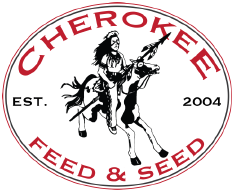Cattle supplements are essential to a cattle nutrition program; however, misperceptions surrounding them can get in the way of cattle performance.
To set the record straight, we’ve busted these five myths about cattle supplements:
Myth #1: Cattle supplements aren’t needed when body condition score is good.
By the time you can visually see cattle losing body condition, you’ve left performance on the table and will be playing catch-up. Increasing body condition score from calving to breeding is difficult.
A cow with a body condition score of 3 at calving needs to gain up to 3 pounds per day to be at a body condition score of 5 before breeding.1 This rate of gain is challenging to do in most real-world conditions without providing cattle supplements.
Being reactive with supplementation means you’ll likely be feeding large amounts of cattle supplements at a higher cost. This makes a cow’s diet more expensive in the long run, so it can pay to be proactive with supplementation.
Myth #2: Cattle supplements are only needed when forage is poor.
Spring brings fresh, green grass that might look like a pasture full of nutrients. However, a limited volume of early season grasses will not supply the nourishment or provide the optimal nutrition your cows need.
When cattle are turned out onto grass they may spend more energy searching for green grass than they can consume. Purina® Accuration® cattle supplements with Intake Modifying Technology® put cattle in control of consumption, helping prevent potential gaps in nutrition to avoid lost body condition and performance.
Forage quality and availability changes throughout the growing season, so consumption will change from week to week. As the quality and/or quantity of forage improves, cattle will consume less Purina® Accuration® supplement.
To think about it another way, for a cow to hit 25 pounds of dry matter intake that time of year, she would have to walk, find and consume 100 pounds of grass pasture per day. How long would it take you to clip and gather 100 pounds of grass?
While grass quality may be great in the springtime, grass quantity may be low during a time the cow should be getting rebred. Cows have the highest nutritional requirement when they are coming out of gestation and entering lactation. Protein and phosphorus requirements go up, and total digestible nutrients (TDN), or energy, increase as compared to the last trimester.
Myth #3: Cattle supplements aren’t needed when there’s a pasture full of fresh, green grass.
Don’t let the luscious, green pasture during the summer months fool you or your cattle. When forages mature in the summer months, nutrient levels decline. A decrease in forage quality causes cows to lose body condition score at a vulnerable point of production.
This nutrient deficiency may occur when a cow has a calf at her side — a critical time for adequate nutrients. She also may be on target for breeding or is bred and developing her calf.
Due to the high nutrient requirements for cattle during summer months, it’s important to prepare for the decline in pasture quality.
Protein supplements for cattle, such as Purina® Rangeland® protein tubs or Purina® Accuration® Blocks, are flexible ways you can supplement.
Myth #4: Using cattle supplements with first-calf heifers before calving causes problems.
People often say increased feeding in the last third of the gestation period will increase calf birth weight, raising the chances for calving difficulty. Research shows this is not true.
Feeding first-calf heifers to calve with a body condition score of 5 to 6 has no impact on calving difficulty.2 Cows maintaining or gaining weight have a lower incidence of calving problems, more energy and better health.
In fact, research shows body condition score at calving impacts the time it takes for a cow to begin cycling and become pregnant. Thinner cows at calving may produce less colostrum than cows with adequate body condition. They can also give birth to less energetic calves that may be slower to stand and may have lower immunoglobulin levels. The result? Less ability to overcome early disease challenges.
Myth #5: Cattle will overeat supplements.
Many factors influence the amount of supplement cattle eat. These factors could include forage quality, stage of production, body condition score, feeder location, water availability or the supplement itself. Purina® Accuration® supplements contain Intake Modifying Technology®, which supports snack eating, causing cattle to be able to eat optimal amounts of forage and get more out of the forage they eat.
